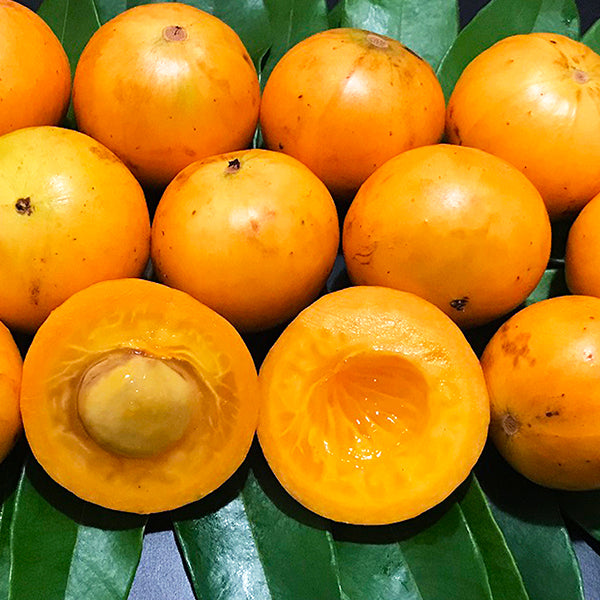HappiestPlants
Cambuca Live Plants (Plinia Edulis)
Cambuca Live Plants (Plinia Edulis)
Couldn't load pickup availability
Share
Cambucá, an evergreen tree known for its slow growth, typically stands between 4 to 10 meters in height. Endemic to Brazil, this tree finds its natural habitat in the coastal regions of the Atlantic Forest. Setting itself apart from other Myrciaria and Eugenia species, the fruit of the Cambucá tree is characterized by its smooth exterior, short stalk, and spherical shape. Starting off green, these globular berries transform into a vivid shade of yellow or bright orange-yellow as they ripen, adorned with numerous slightly raised longitudinal ridges. Measuring 6 centimeters in diameter, the fruit offers a delightful fusion of sweetness and a subtle tang, reminiscent of the flavors of mango and papaya.
Referred to by various common names such as Cambuca, ambucazeiro, and Cambuca-verdadeiro, this botanical wonder is formally known as Plinia Edulis. Typically, these trees begin to blossom and bear fruit after a patient wait of 5 to 7 years. To ensure their optimal growth, Cambucá plants thrive in an environment with a touch of shade, thriving best in deep, fertile, humus-rich soil with a notable need for an ample supply of iron. As for their upkeep, they fall under the category requiring a moderate level of care and attention. Cambucá serves as a testament to the natural beauty of Brazil, not only offering a distinct fruit but also delivering a delightful blend of flavors that tantalize the taste buds.






